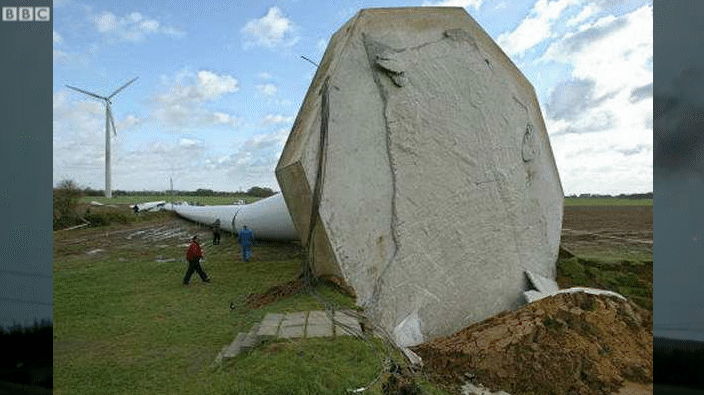The True Cost of Wind Power
Wind turbines are the least loved of the “renewable” power generators. They completely destroy the aesthetics of their locale, they are noisy and very destructive of bird life. Many accept these issues on the basis that once they are up and running, they provide free electricity. Of course there is no such thing as a free lunch, and nor is there such a thing as free electricity.
The initial capital cost is often disregarded because it is usually government funded, up to 70% or more in Europe. A typical commercial wind turbine costs around USD3-4 million to build and produces around two megawatts (“Mw”) of electricity.
One megawatt is about the same as the energy production of 10 average cars. But windmills rarely operate at peak efficiency and power generation can often approach zero. There are wind turbines near Canberra, Australia, that I have driven past several times and only ever seen them turning in slow motion or stationary.
The installation of wind turbines is expensive – access roads, connections to the electricity grid (which can cost billions) and foundations. The latter can require up to 1,000 tonnes of concrete and steel. The net effect is that each turbine consumes vast amounts of energy and materials long before it is operational. Of course in a government subsidised system such costs are irrelevant.
One of the worst problems with wind turbines is that the intermittent power supply causes instability to the electricity grid, decreases safety, and often actually damages the grid. It also means that additional generation capacity needs to be available when the wind doesn’t blow. This capacity is generated using coal or gas.
Several countries are now turning away from wind power because of its true cost. China has banned the installation of any further wind turbines as a result of network damage and the high cost of the power they produce. In the Netherlands also, many wind turbines cost more to run than the value of energy produced. The government is considering demolishing them. In fact, in most of Europe wind power is not cost effective without further subsidies.
Finally, they regularly catch fire, blades fall off, or the entire tower falls to the ground. These issues are going to be increasingly common as the turbines age. Wind turbines have a lifespan of 12 to 20 years. Many are already there.
Conclusion
Don’t write off fossil fuels yet. I think in future we will look back on wind energy as a terribly expensive blunder that only happened because of government support and subsidies. Solar, of course, has its own set of problems. The real problem is the hubris of some people that think you can get something for nothing. Read more about the cost of renewables here.


